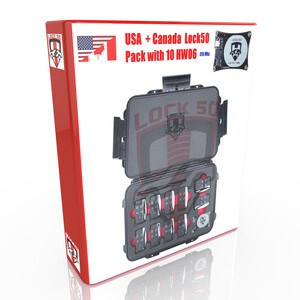NCF29A1 UHF Transmitter Signal Modulation Introduction
1. Introduction to NCF29A1 UHF Transmitter
NCF29A1 integrates multi-channel UHF transmitter on chip. It can work in the frequency band of 310-447MHz, and can also support 868MHz and 915MHz upon request . frequency band, the device has a unified reference frequency (27.6 MHz) for all frequency bands.
The NCF29A1 UHF transmitter is controlled by a RISC controller and supports FSK, ASK, OOK modulated carriers with a data rate up to 25kbit/s (Manchester encoding). A programmable power amplifier regulates the antenna pin voltage to minimize carrier temperature variations and battery voltage variations.
The transmitter includes baseband and RF signal processing, and finally the modulated RF signal is amplified by the power amplifier PA.
2. UHF signal modulation method
1. ASK modulation
ASK (Amplitude Shift Keying) amplitude keying, the possible state of the digital modulation signal corresponds to the binary information symbol or its corresponding baseband signal state, and the modulated signal is called binary digital modulation Signal. Keying with binary information symbols, also known as binary amplitude keying, is represented by 2ASK, that is, OOK (On-Off Keying) binary on-off keying. The anti-noise performance of this modulation method is not as good as other modulation methods.
When the debugged baseband signal is 1, the carrier is transmitted;
when the debugged baseband signal is 0, the carrier is not transmitted;
2. FSK modulation
FSK (Fequency Shift Keying) frequency shift keying, using two oscillation sources with different frequencies to represent signals 1 and 0. Use 1 and 0 of the digital signal to control the alternate output of two independent oscillation sources. This modulation method has better performance in anti-noise and anti-attenuation.
3. Signal formation
NCF29A1 modulation mode is configured by ASK bits, ASKRMP and FSKRMP registers to configure software ASK and software FSK modulation.
1. ASK
In the case of ASK, the amplitude of the radio frequency signal is inclined between two levels defined by AMH and AML; the binary signal '0' of the encoder is converted into the ASK amplitude AMH level, and '1' is the AML level.
Soft-ASK sets the linear amplitude gradient between the two amplitudes of AML and AMH assigned to the binary modulation signal, the difference between the two signal amplitudes represents the ASK modulation index (ASK modulation depth), and the ramp time between the amplitude values is determined by Controlled by the ARMPEXP and ARMMPANT bits in the AKSRMP register.
2. FSK
In the case of FSK, the signal frequency is inclined between fTX±fDEV, and the binary signal '0' represents a positive frequency deviation.
Soft-FSK is based on the linear frequency gradient between two equidistant signal frequency values of the radio frequency carrier. The positive offset and negative offset of the carrier frequency representing the binary modulation is defined as the frequency offset fDEV, and the ramp time of Soft-FSK should be Configured for lowest spectral noise in receive baseband.
3. Signal slope
For the two modulation methods, the ratio between the ramp time of the linear signal TRAMP and the transmission signal time TCHIP is defined as the signal slope.
In order to avoid the sensitivity reduction at the receiving end, the slope of the linear curve at the zero-crossing point should not be higher than that of the sinusoidal curve, that is, slope = 2/Π = 63.7%.
Slope = TRAMP / TCHIP
4. Example of modulated signal
Example measurement uses NCF29A1 to transmit typical RKE RF protocol settings
Configuration 1:
Center frequency 433.92 MHz
Manchester coded ASK modulation
Baud rate 10 kbit/s
Configuration 2:
Center Frequency 433.92 MHz
Manchester Coded FSK Modulation
Frequency Offset +/- 42 kHz
Baud Rate 10 kbit/s
Recent posts
- L460 Locked BCM RFA Latest Security applied 2024 RFA Unlock and Erase old Lost keys
- Updated SW24 Lock50 HW04-B & C OBD Tool JLR CCF Editor As built Flashing Programming to GWM
- Check how many copies done for Lock50 HW13/HW14 HW05/HW06 keys in Latest update and if key is valid when Read the Keys
- AKL Land Rover Discovery in France by Gentleman Prog
- SW40 Released Unlock EVA2 RFA






















